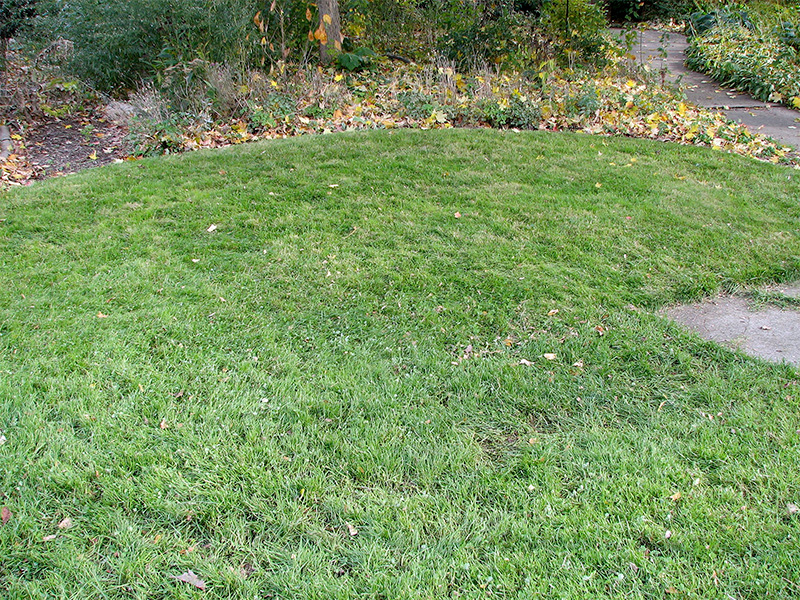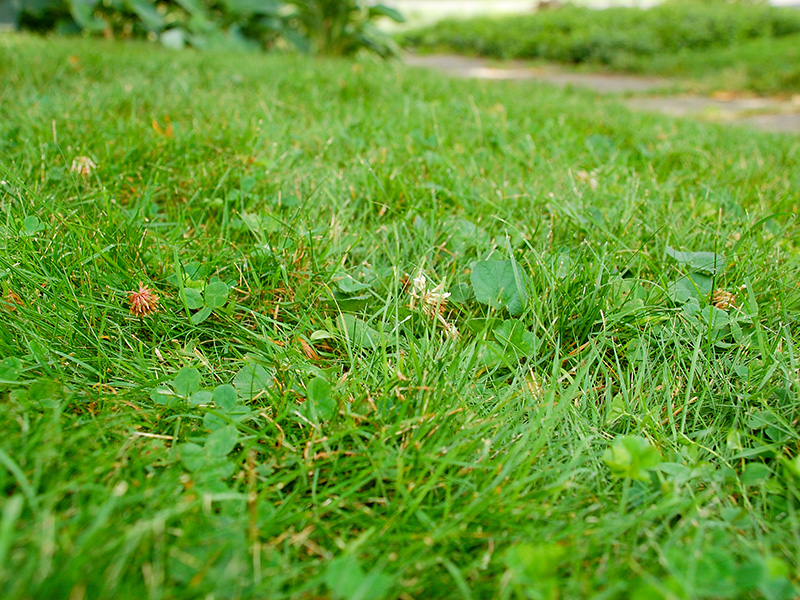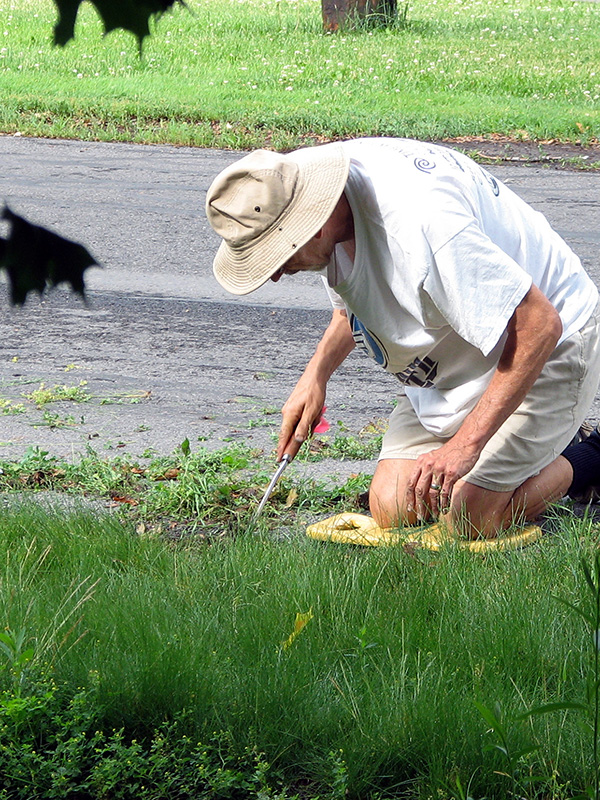
I’d say that the lawn we have left (a minuscule fraction of what we started with) is a combination of an organic lawn and a Freedom Lawn, a term coined by L. Herbert Bohrmann et. al. in the book Redesigning the American Lawn (see Resources).

Seen up close, would a lawn care company use our lawn in their ads? No!
Is this a lawn that will harm children, pets, and wildlife?
NO! NO!! NO!!!
On the other hand, we may be a little too careful about weeds in our lawn for it to qualify as a real “Freedom Lawn” (as defined in the book Redesigning the American Lawn). In the past, John spent a few minutes after work each day using the dandelion digger tool, and now we have very few dandelions. I also hand-pull weeds I spot, especially along the edge of the road where weed seeds arrive.
We’re happy with a “good-enough” lawn — “good enough” meaning that it’s a decent lawn, even if not perfect. And the less lawn the better.
Our organic lawn care principles
These simple principles are pretty effective:
- Mow high so the grass plants can produce more food for themselves
- Leave the clippings on the lawn, becoming its own compost
- Occasionally add a sprinkling of our compost if a spot looks like it needs it
- Hand pick the most obvious weeds
Note that we’re NOT applying fertilizer or pesticide products that are labeled “organic” that aren’t necessarily safe though they may be plant-based. We’re just using organic principles and moderating our expectations.

Actually it’s not that hard to hand-pull weeds when you first reduce your lawn to a reasonable size (i.e. small) and you keep the turf grass plants healthy by using organic methods.
The lawn John is weeding in the photo is one of the lawn alternatives we’ve tried: the No Mow grass area we hadn’t tended to sufficiently when we first planted it. (We no longer have this patch of No Mow.)
If there’s a drought or summer heat wave, we simply let the lawn go dormant.
Even so, we think our lawn compares quite favorably with other lawns on the street — even those that have professional chemical-based lawn care (which makes us wonder all the more why on earth so many people are still using this harmful stuff!)
The nice thing is, though, that even if the lawn gets a little less green, all our other plants are bursting with life. Who notices the lawn with so many other plants to enjoy?
Resources
- New York Times:
- Consumer Reports:
- A lush lawn without pesticides – and in May 2021 issue of CR
- Univ. of Iowa Good Neighbor:
- Beyond Pesticides:
Reflections
The bylaw is working very well, costs us very little to maintain and grass is still growing in Hudson.
Michael Elliott, Former Hudson, Que., mayor who helped bring in Canada’s first municipal pesticide ban. (The Ottawa Sun, 11/22/02)
We need to see a perfect lawn not as enviable, but a sign of harm.
~ Dr. Diane Lewis, founder of the Great Healthy Yard Project
We have the most beautiful lawn in the neighborhood, and we’ve already poisoned 14 people.
~ Art Buchwald, humorist
Out of Fashion: Green Lawns
Big chunks of Canada have banned certain lawn pesticides. In the U.S., municipalities such as Los Angeles and Raleigh, N.C., regulate how many times a week homeowners can turn on the sprinklers.
That said, while rationing water during droughts has merit, I don’t think policymakers should start regulating lawns broadly.
Deploying inspectors to count the square footage of grass vs. wild plants is a waste of resources when states are cutting teachers and cops.
The best approach is for all of us to start thinking of lawns as a fashion—a fashion like wearing the feathers of rare birds in hats was once a fashion. Fashions can change when enough people decide they are ridiculous or wasteful. Few parents would light a cigarette at a playground anymore, even if it’s not illegal, and we should start treating the presence of a vast, green, cropped grass lawn in the middle of summer the same way: as a weird and antisocial thing.
~ Laura Vanderkam, Out of fashion: Green lawns, USA Today, 8/16/10
